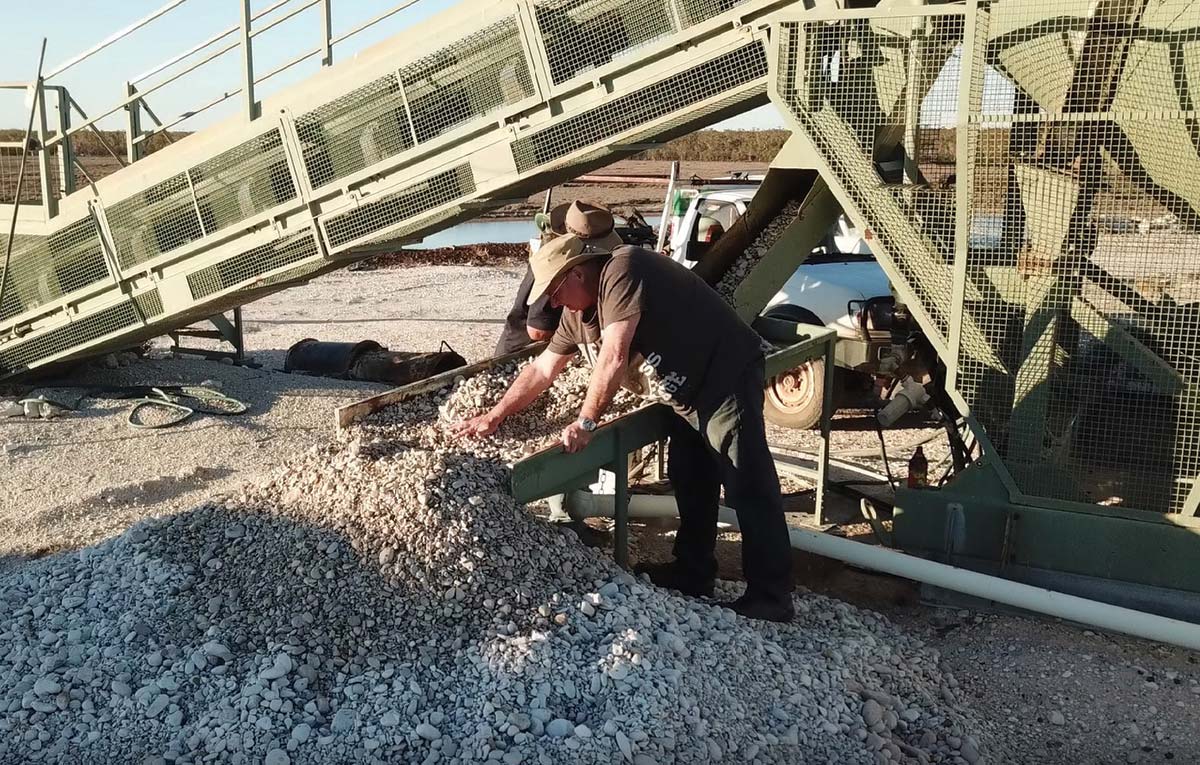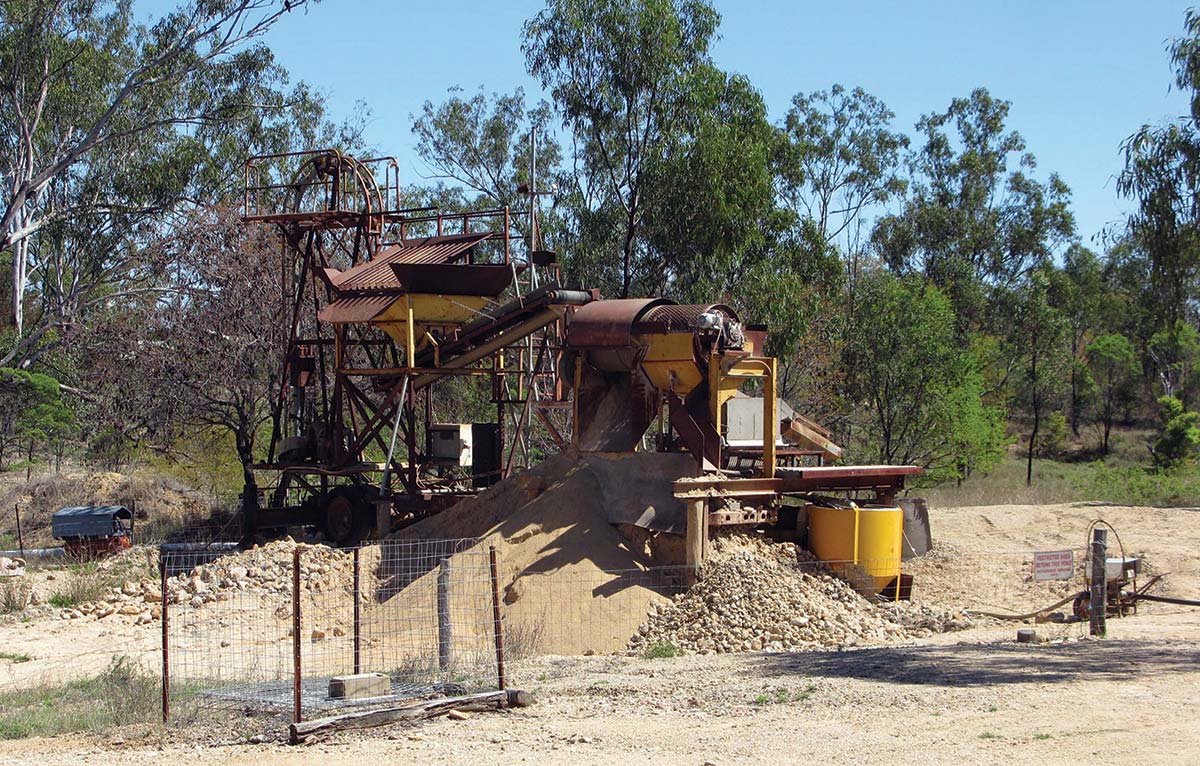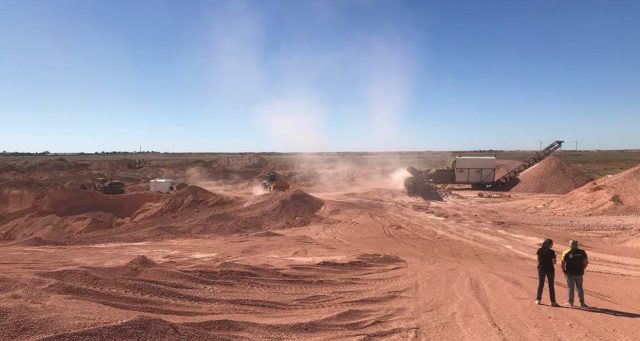Estimated reading time: 6 minutes
Australia is renowned for its deposits of opal and sapphire, which are mined predominantly by small mining operations—typically family businesses and small partnerships. Despite their size, they are generally well-equipped operations requiring significant capital investments and high operating and maintenance costs. How has Covid affected the supply chain?
Australia is renowned for its deposits of opal and sapphire which are mined predominantly by small mining operations, typically family businesses and small partnerships. Despite their size, they are generally well-equipped operations requiring significant capital investments and high operating and maintenance costs.
The current pandemic has had a considerable effect on the entire supply chain of these gems. All of the mining fields have felt the absence of international buyers who cannot visit due to the closure of Australia’s borders. Local buyers have also experienced access issues due to the sudden and frequent closure of internal state borders.
Since the Tucson 2020 show, most international trade shows have been cancelled, postponed or reverted temporarily to a smaller local version of their former configurations. With Australian borders closed and severe restrictions on travel being applied globally, dealers have been unable to display and sell their stock in the major markets. All of this has resulted in a major slowdown in the supply of Australian gemstones. The exception seems to be the demand generated through internet providers.
Opal Mining Fields
The South Australian opal fields of Coober Pedy, Andamooka and Mintabie have all experienced considerable downturns. Most miners have continued mining operations in addition to drilling and prospecting for new claims and areas. Justin Freytag, President of the Coober Pedy Miners Association, is confident that a 50 sq. km. area near the existing mining fields is highly prospective and the Association is working with Government to have the area designated as an opal prospecting area. The next steps would involve conducting large-scale resistivity monitoring, GPS plotting and mapping. Other miners in the region continue to work their mining claims knowing that production will be snapped up by buyers when Covid-19 is behind us.

In the remote town of Andamooka, the slowdown has impacted some of the town amenities which service some 163 registered opal miners. The supermarket, fuel outlets and hotel have all closed making life a little more difficult for the small community. The township of Mintabie located on Aboriginal land was closed down on 1 January 2020 by the State Government. All residents and businesses were ordered to vacate their leased premises and properties so that the native titleholders could reclaim the area. A small number of opal miners continued their mining operations remotely, but in July 2021 were forced to leave the area. Visits were restricted to prevent Covid 19 spreading to the susceptible remote Aboriginal communities.

At the Lightning Ridge opal fields, famous for producing the highly sought after Black Opal, there are some 3,120 mining claims. Sebastian Deisenberger, President of the Lightning Ridge Miners Association, estimated a production drop of more than 60% based on stones being presented to their pricing advisory service. The lack of buyers has slowed the sale of higher-end stones, while internet sellers are snapping up the low to medium quality.

(Photo: Cody Opal)
Australian Boulder opal is mined in the state of Queensland. The effects of Covid-19 have been part of the reason for the reduction in productivity. The Queensland Boulder Opal Association (QBOA) has been working on resolutions that will allow a better flow of access to ground for existing and new miners and a more cost effective model for holding mining tenures. They would like to see the reduction of the term of an exploration permit making mining applicants use it or lose it within the allocated time frame. They are also asking for an increase in the allowable number of prescribed mining claims one applicant can hold.
In other news from this region, the QBOA made a decision that it will try to purchase unallocated state land inside the Opalton reserve, with the aim of building a major Information & Visitor Centre at Opalton to showcase and preserve its history. This would be an important tourist attraction for the region.
For the second year running the Lightning Ridge Opal festival was cancelled and rescheduled for July 2022. Similarly, the Australian Opal Exhibition at the Gold Coast scheduled for August 2021 was also cancelled for the second year running. These events are important showcases for opal production and valuable trade buying opportunities have been lost. Opal shows at Winton and Yowah went ahead, but were severely impacted by the temporary closures of internal state borders locking down around two thirds of the nation.

Sapphire Mining Fields
Sapphire mining in Australia first commenced in the 1890s and since then the areas around Anakie, Glen Innes and Inverell have produced more sapphire than any other location in the world. The deposits are located in tertiary volcanics, basalts and
pyroclastics. These alluvial deposits are found using open cut and shallow underground mining techniques. The soils are washed in rotating trommels with high pressure water jets. The gravels are then separated with vibrating sieves and pulsating jigs.
Production peaked in the late 1980s and it is estimated that today it has fallen to around 10% of the peak. Recent acquisitions might see a significant increase in production. The production to date has come from two larger scale miners and a handful of smaller operations. Recently, Fura Gems Inc. announced that it had bought two sapphire mining operations, Capricorn and Great Northern. They now have almost 20 sq. km. of mining area and a further 110 sq. km. with exploration licenses. We should anticipate that Fura will develop and improve these mining operations and then promote and market Australian Sapphire very heavily once the effects of Covid-19 have passed.
Australian sapphire expert Terry Coldham reports that the major issue for production and sales is the effect of the Covid-19 restrictions on the processors in Chantaburi, Thailand. As a result, some miners are now treating and cutting their own production. These delays and the lack of tradeshows around the world have severely slowed cut stones reaching the market place. Coldham says that these issues have come at a time when demand for Australian Sapphire exhibiting teal blue, green/blue, yellow, green and multicolored or parti colors has never been stronger.

















